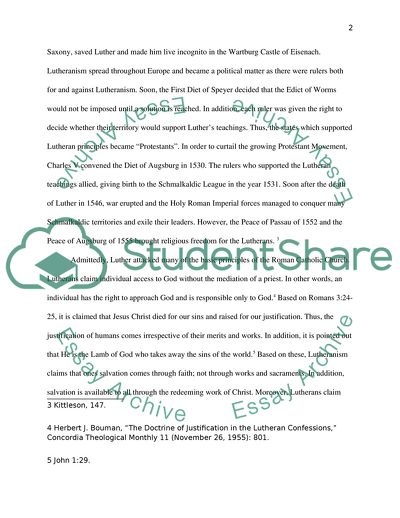Cite this document
(Various Protestant Reform Movements in the 16th Century Report Example | Topics and Well Written Essays - 1750 words, n.d.)
Various Protestant Reform Movements in the 16th Century Report Example | Topics and Well Written Essays - 1750 words. https://studentshare.org/religion-and-theology/1818053-overview-of-all-four-different-protestant-reform-movements-lutheran-anabaptist-reformed-calvin-and-english
Various Protestant Reform Movements in the 16th Century Report Example | Topics and Well Written Essays - 1750 words. https://studentshare.org/religion-and-theology/1818053-overview-of-all-four-different-protestant-reform-movements-lutheran-anabaptist-reformed-calvin-and-english
(Various Protestant Reform Movements in the 16th Century Report Example | Topics and Well Written Essays - 1750 Words)
Various Protestant Reform Movements in the 16th Century Report Example | Topics and Well Written Essays - 1750 Words. https://studentshare.org/religion-and-theology/1818053-overview-of-all-four-different-protestant-reform-movements-lutheran-anabaptist-reformed-calvin-and-english.
Various Protestant Reform Movements in the 16th Century Report Example | Topics and Well Written Essays - 1750 Words. https://studentshare.org/religion-and-theology/1818053-overview-of-all-four-different-protestant-reform-movements-lutheran-anabaptist-reformed-calvin-and-english.
“Various Protestant Reform Movements in the 16th Century Report Example | Topics and Well Written Essays - 1750 Words”. https://studentshare.org/religion-and-theology/1818053-overview-of-all-four-different-protestant-reform-movements-lutheran-anabaptist-reformed-calvin-and-english.


